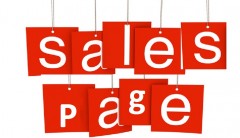 By Lee Polevoi
By Lee Polevoi
When it comes to sales, can we agree on two things?
First, no one likes to be sold to.
People want to be persuaded or given the illusion they’re making their minds up for themselves.
Second, we tend to do business with people (and businesses) we like and trust.
So how can we write sales copy that reflects these timeless truths?
Start By Connecting
Sales are often aimed at our innermost concerns and desires.
Obviously, we want to be happy, improve our lives, enjoy healthy relationships with other people and — I’m going out on a limb here — make lots of money. Our concerns revolve around our personal health and fitness (and those of family and friends), and, generally speaking, a desire not to be alone.
Any piece of sales copy that promises readers all of the wonderful things mentioned above — and none of the bad things — is just about guaranteed to fail. People know hype when they see it. A better way to start is by addressing those concerns and desires in specific ways, using language people can relate to, and demonstrating that we are talking to them like a real person.
Real people use words such as “I” and “we.” They tell stories to illustrate their points. They strike up conversations in the grocery checkout line or while buying popcorn at the movie theater. They’re not intent on selling something to each other (well, maybe they are, but nothing that you’ll likely see on a business website or an email newsletter).
The point is, before anything else happens, there has to be rapport.
Know the People You’re Addressing
How well do you know your target market? Can you identify their particular likes and dislikes? If you can, focus on the things they genuinely care about, not what you would like them to care about.
“When people see their own thoughts and attitudes expressed in your sales copy, it builds an immediate connection that can break through their sales resistance,” says Kathryn Aragon, editor of the Daily Egg. “It’s as simple as being a person, not a salesperson.”
Write Like People Talk
The best sales copy doesn’t sound like sales copy. It makes use of words and phrase we all use. Forget the $10 words you picked up while reading Proust’s Remembrances of Things Past. The style is conversational, which can in addition to complete sentences include sentence fragments, parenthetical asides, a little bit of slang here and there.
Benefits Over Features, Every Time
No doubt your great product or service has many attractive features you feel people should know about. But if you’ve genuinely put yourself in the mind of your customers, all you need to do is look at each feature and ask yourself, “So what?” How do these features translate into tangible benefits all customers are looking for — such as convenience, reliability, and less cost?
Start Strong
You have a few precious seconds with which to catch the reader’s eye and interest, so pay close attention to your headline. It should highlight your key benefit or selling point in some way, which is what should be emphasized in the all-important first couple of paragraphs. Identify a single key benefit that your product or service provides.
It’s okay to mention secondary benefits later on, but nothing should distract from the principal message you want to convey.
Make Your Sales Copy Easy to Scan
While you’ll no doubt craft every single word with care, don’t expect people to read your copy that way. Instead, make it easy for people to scan content by writing short paragraphs (three to four short sentences at most), a liberal use of subheads, occasional use of italics and boldface for emphasis, and inserting evocative imagery that resonates with the copy.
Sprinkle in the Calls-To-Action
If you’ve done a great job with your sales copy, there’s no need to wait until the very end of the message to insert the “Buy Now” button. (In fact, if you wait too long, you may lose readers’ attention.) A “buy now” option midway through the copy lets people take action without feeling they have to read every word.
Urgency matters, too. Including phrases like “limited-time offer” and “5 percent discount off $25 purchase two days only” helps nudge on-the-fence customers towards taking action.
Giving people the information they need to decide for themselves—as opposed to overwhelming readers with wild promises or pushy language—builds trust. (An authentic, well-placed customer testimonial helps, too.) Trust offers the unspoken assurance that your product or service will address the customer’s needs and move them to that final decision to purchase.
What strategies work best for your sales copy?